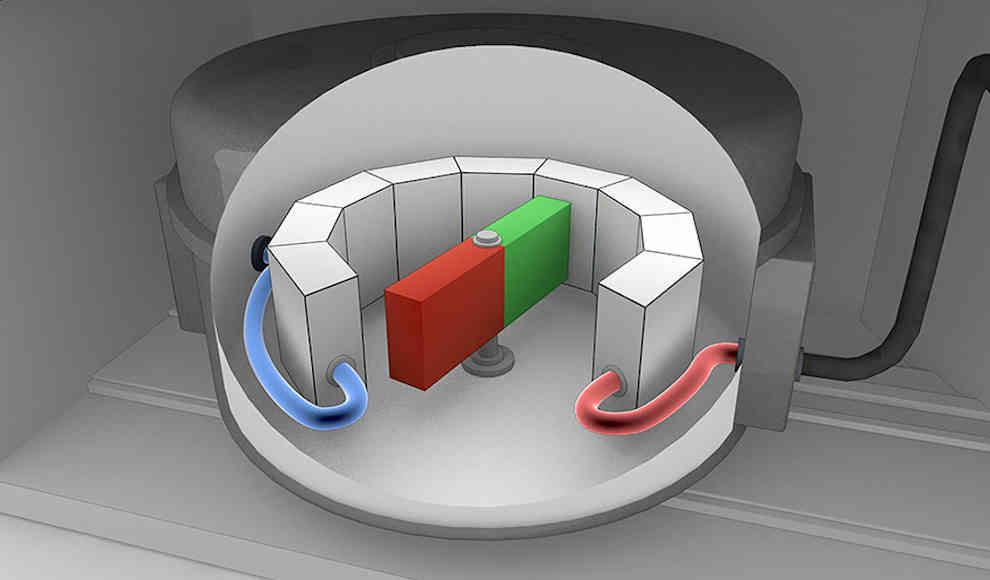Innovative magnetocaloric cooling systems could soon replace traditional chemical refrigerants, according to researchers at the Fraunhofer Institute for Physical Measurement Techniques in Freiburg, Germany. Current cooling systems rely on fluorinated hydrocarbons (FCKWs), which are harmful to the environment and have a high greenhouse gas potential. However, the new technology uses magnets to create a cooling effect through the use of metals, eliminating the need for chemical refrigerants. The process involves generating heat in certain materials when exposed to a magnetic field, which can then be used to create a cycle of heating and cooling. The resulting cooling effect is achieved by removing the heat generated during the process.
The main challenge with magnetocaloric cooling has been finding materials that are magnetocaloric at room temperature. While materials such as nickel and iron are magnetocaloric, the effect only occurs at temperatures of several hundred degrees Celsius. Gadolinium, a rare earth metal, is magnetocaloric at room temperature, but is too rare to be used in industrial applications. However, alloys that are magnetocaloric at room temperature were developed in the late 1990s, and the Fraunhofer researchers have used a Lanthanum-Iron-Silicon alloy for their cooling system. The innovation lies in the method used to remove the heat generated during the cooling process.
The researchers have used tubes containing a vacuum and small amounts of water to remove the heat generated during the cooling process. The water absorbs a large amount of energy when it changes from a liquid to a gas, which can be used to transfer the heat away from the cooling system. The Lanthanum-Iron-Silicon alloy has been structured with fine pores to ensure efficient interaction with the water vapour. The heatpipes have also been installed in a circular pattern to further increase the efficiency of heat removal. A demonstration system with a power output of 300 watts is expected to be shown soon, with the researchers aiming to break the current world record for magnetocaloric cooling systems, which stands at 30% efficiency. The researchers believe that their technology could achieve a maximum efficiency of up to 50%.










